|
Tom's model was Bill Schroeder, a neighbor of
his. Bill is an interesting guy and had Tom not
been focusing on describing the painting process
to the class, he would've been asking Bill about
hang gliding and the other sports he enjoys. One
of the benefits of painting people from life is
that you get to learn new things all the time.
Most adult portrait subjects have led fascinating
lives and Tom enjoys learning about them while
he paints.
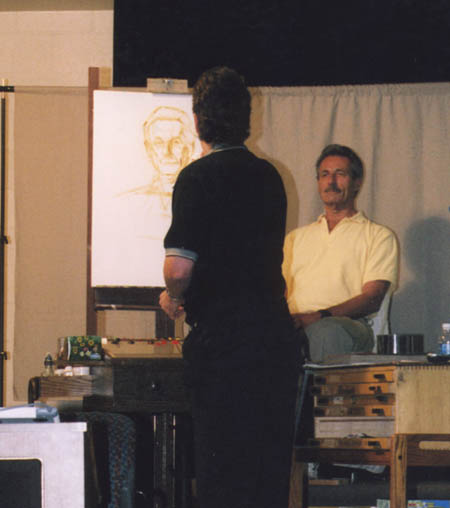
Tom paints on both toned and untoned canvas. For
this demo he worked on a plain white one. He began
drawing in paint with some unobtrusive yellow ochre
knowing the artificial light would mean the colors
would generally be warm.
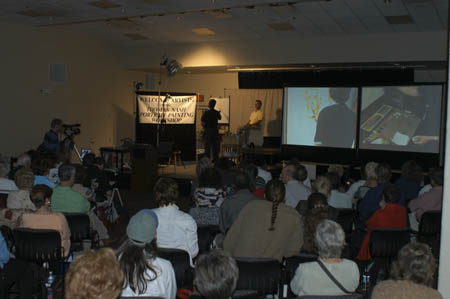
The two-screen arrangement assured that there wasn't
a bad seat in the house to follow both the activity
on the canvas and the mixing on the palette.
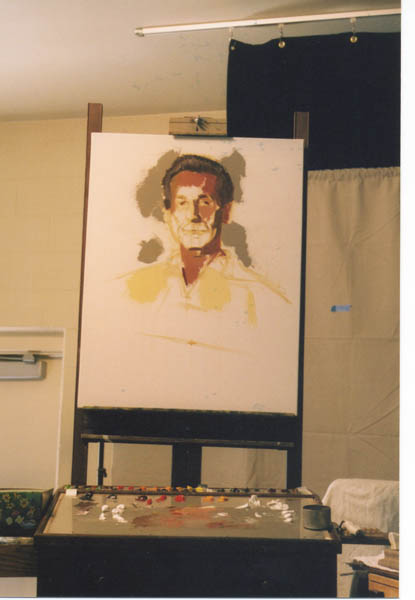
Because the day was about teaching and learning,
Tom demonstrated the mosaic type approach to color.
He might've simply rendered a likeness with a monochrome
of some predetermined colors, but preferred to show
how he studies the coloring of his subjects while
he paints and pushes for more, not less life and
vibrancy.
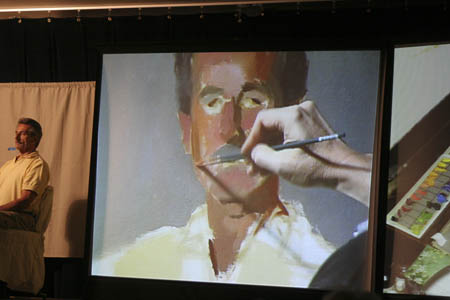
As Matt took advantage of the camera's zoom, the
audience really got a close look at every nuance
of the paint strokes.
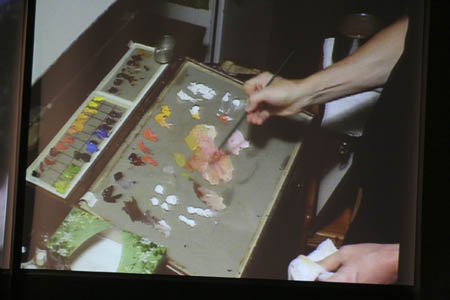
One lesson that many audience members figured out
for themselves was that sometimes you don't use
every color on your palette. It's like playing a
song on the piano; you don't always need to hit
every key just because it's there.
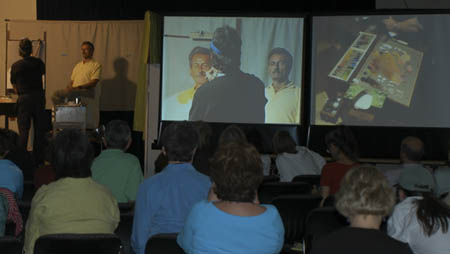
By actively working the camera, Matt made it possible
for the audience to see both the model and the painting
when he pulled back for a wider shot.
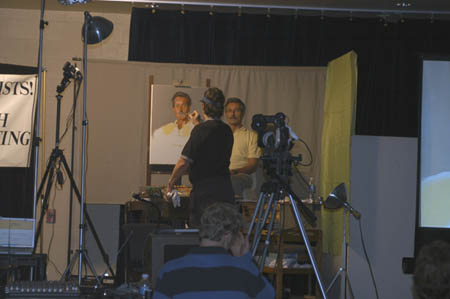
Tom had originally considered painting Bills arms
and hands in the picture. Because he concentrated
on other things he didn't get around to it. Because
Bill is a friend and neighbor Tom left the bottom
of the canvas empty so that he might add them later.
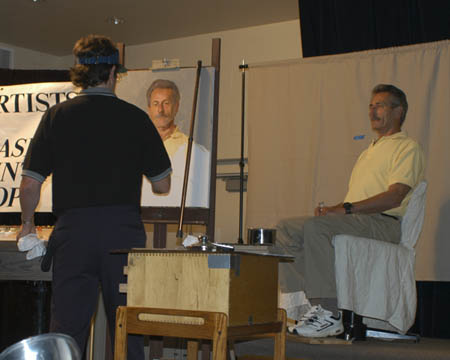
Tom sometimes uses a cane to rest his hand on during
the later stages of a painting. It's handy in that
it can be easily hung over the canvas when he doesn't
need it.
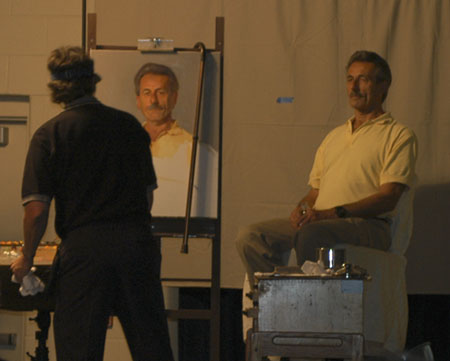
In the beginning Tom kept his taboret between himself
and the easel. This kept him from getting up close
too soon. Towards the end he moved it aside so that
he could step closer to the painting and steady
his hand for some finer details.
|

